Jef’s Tips to help your Gibson Les Paul play like a dream, Part 3: Lock it down
Stop your rattles, improve your tuning and save your finishes!
Like many other guitarists, I’ve modified and upgraded many of my Gibson Les Paul guitars over the years, trying to get that little bit more from my instruments. I have tried lots of upgrades and mods, so I thought it was time to share my favourites. So here’s Part 3 in my series on improving your Les Paul: It’s time to get yourself some locking bridges and tailpieces.
Upgrades
First off, let’s be clear about one thing: you will not increase the value of your guitar by adding new hardware to it. This is often where players make a mistake. Just because you sink an extra few hundred into modifying a guitar does not mean that you will ever get that back if you decide to sell the instrument in the future, as buyers generally want to buy a guitar in its original factory state.
Taking this into account, I would suggest that you hold onto any original Les Paul parts so that you can return the guitar to stock state if you decide to sell it later. In this article, I am going to concentrate on locking bridges and tailpieces, as I find that these are easy to fit. Installing these upgrades will not damage your Les Paul and are easy to remove if decide to sell on your guitar.
Locking bridges and why they are a good idea
What’s a locking bridge, anyway? A locking bridge is one that is fastened to the body of your guitar. The factory bridges are held in place by the string tension. If you take off the strings, they fall off. Locking bridges allow for easier string changes. Some also claim that they improve the tone of your guitar by heightening sustain. I suspect that the latter statement is probably an example of music industry snake oil. I have never noticed that using a locking bridge has brought an extra few seconds of note length. Many of these claims are marketing hype.
However, I have noticed better tuning stability. And when I have to change my strings, the bridge doesn’t fall off, which avoids any possible damage to my guitar. For me, the advantage here is convenience. It ‘fixes’ the inherent design flaw of the ’50s engineering of loose hardware being held in place by string tension.
Locking bridges, studs and tailpieces
Most players will find adding bridges and tailpieces a simple upgrade. Among my favourites are Faber locking bridges, locking studs and tailpieces. I have always preferred this brand to TonePros, as the Faber locking mechanism doesn’t rely on small grub screws like TonePro.
Grub Screws
I have lost a few of the grub screws over the years, as they can rattle loose. That’s why I prefer the Faber brand, as it does not rely on small parts to hold the bridge in place. Of course, you can always apply a little Loctite thread lock or even clear nail varnish to a grub screw to hold it in place. But, that is just another thing to have to remember, so where possible, I use Faber.
ABR-1 vs Nashville
I have both manufacturer’s locking bridges on my own Gibson guitars, depending on what hardware is required. For example, on my Gibson Custom Shop R7 Gold Top, I use a Faber locking ABR-1 vintage style bridge and locking studs, whereas on my Gibson SG I use a TonePro setup, as it has a Nashville bridge.
Because ABR-1 bridges are the older design, they have less mass and a much smaller contact area with the guitar body and I have just found that the Faber design works better for me and is more stable.
There are some alternatives out there, including just Callaham locking studs for the tailpiece and these are designed to stop a regular tailpiece from dropping off when you go to change your strings.
Imperial vs Metric
When buying any locking parts, you will need to remember that the USA built Gibson guitars will use Imperial measurements and imported guitars like Epiphone will use Metric parts.
Aluminium Tailpiece
Whilst looking at upgrading your Les Paul’s bridge and tailpiece I would suggest that you look into aluminium ’50s style tailpieces as a good tonal upgrade. These where what Gibson used originally on their Les Pauls in the early days and you can pick them up from companies like Pigtail or Faber.
They are, of course, lighter and more vintage-correct than the modern day versions and make a nice upgrade to a Les Paul or SG style guitar.
Simple
This article is a simple way to ease you into upgrading your Gibson Les Paul and over the next few weeks, I shall be sharing more of my favourite guitar upgrades with you, including a few that will require some more intrusive and more complex upgrades a bit later in the series.
You can also check out my articles on some useful tips for setting up your Gibson Les Paul here and here.
For more Gibson articles click here.
4 responses to “Jef’s Tips to help your Gibson Les Paul play like a dream, Part 3: Lock it down”
 4,5 / 5,0 |
4,5 / 5,0 | 


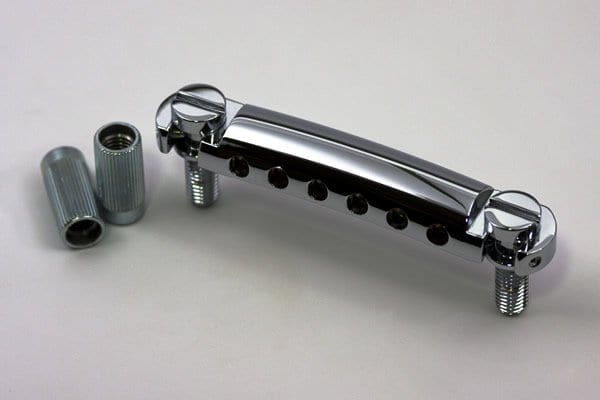
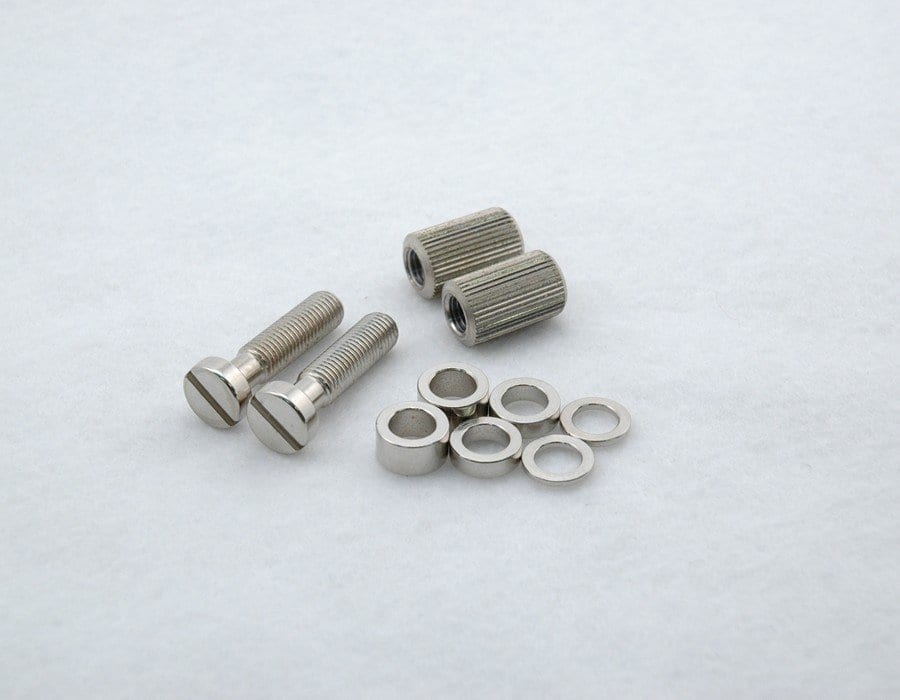
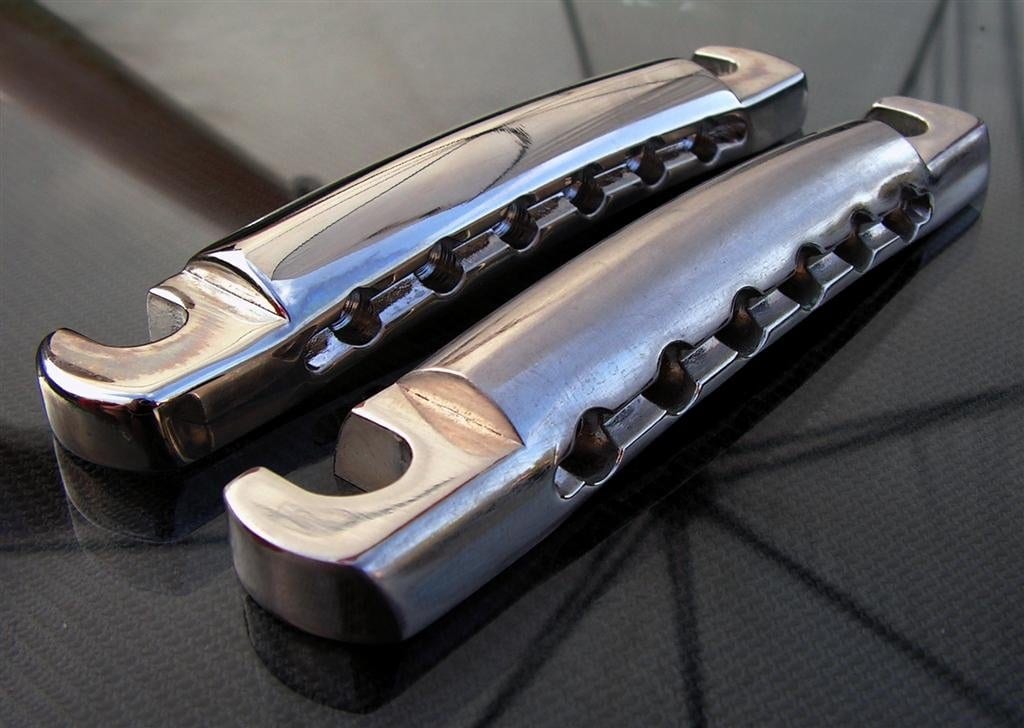
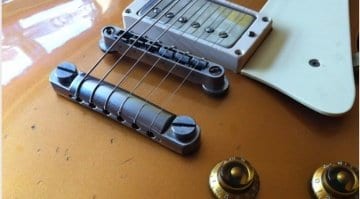


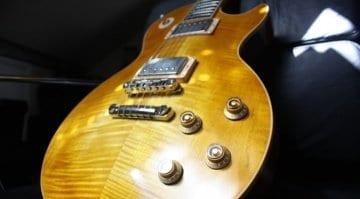
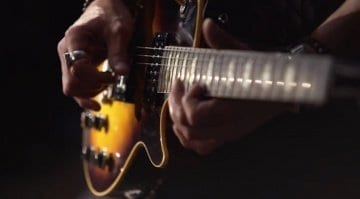


Thanks for sharing such valuable information on the guitar tuning. I am a guitar lover and spend most of the time on this. I have an Epiphone guitar and recently I have to replace guitar tuner buttons. I want to do this replacement process from my end and for this reason, I want to know guitar tuner buttons. I will be glad if anyone could provide some information on this.
Hi Nethan. I’m not certain why you need to change the tuning machine buttons on your Epiphone guitar? Are the tuner buttons faded and/or worn looking? Do you know what brand or brand like your tuners are? Remember import guitars typically use metric threads. To make things easier if your Epiphone guitar has Grover tuning machines you may want to replace them with “Original” Grover Rotomatic’s. Although the Grover’s on Epiphone guitars look the same of those on Gibson guitars they are not the same tuners. I believe the Epiphone Grover’s are “Made in China”. One way you can tell is the kidney tuner buttons do not have a crease from the screw hole to the button post. The Grover’s used on Gibson guitars are “Made in Korea” I believe? You will see a crease from the screw hole to the button post. If you have Grover’s consider replacing the entire set. If you have “Kluson Style” there are many brands that will be a direct fit. The most important thing to determine is if the tuner bushings are “hex bolt” or traditional “press fit”? Once you know that I suggest searching the internet for affordable replacements.
Hello, I recently bought a Les Paul and I’ve never seen any information about bending the strings around the tailpiece just as you have put in the first image, do you know anything at all? Does it improve sound quality? Does it put less stress on the strings? Or do you know where can I ask properly?
Nice article btw.
Why is the guitar in the picture a Chibson that claims to be a Gibson R7?